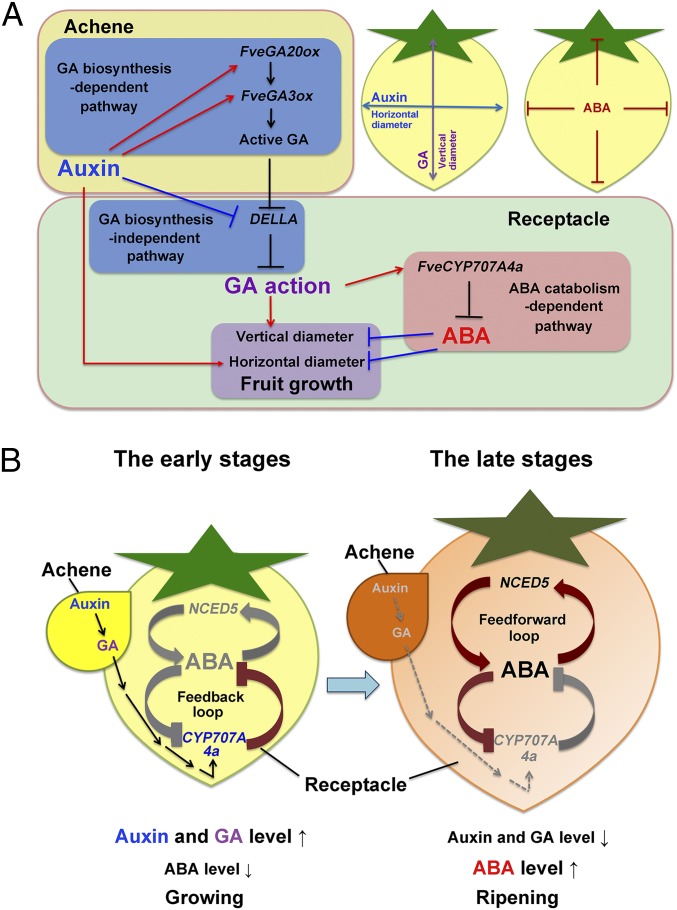Fig. 6.
Auxin and GA promote fruit growth by activating ABA catabolism in the early stage and are important for the regulation of interlinked regulatory loops of ABA catabolism and biosynthesis during fruit development. (A) In the early stages, auxin promotes fruit growth in both width and length in GA-independent and -dependent pathways, respectively. Auxin promotes GA biosynthesis and signaling, which promotes fruit elongation only. In contrast, ABA inhibits fruit growth both in width and length, while auxin and GA activate ABA catabolism to ensure efficient fruit growth. (B) The interconnected ABA catabolism-mediated double–negative-feedback loop and ABA biosynthesis-mediated feedforward loops in fruit development. Auxin and GA from achene in early stages promote the expression of the FveCYP707A4a gene to ensure the endogenous ABA level is extremely low. At the initiation of ripening stage, auxin and GA levels decrease to a threshold, and so does the FveCYP707A4a expression, leading to the activation of the feedforward loop for the steep increase of ABA level to trigger transition from “growing” to “ripening.” The high level of ABA in the late stages further inhibits the expression of FveCYP707A4a to enhance the activation of the feedforward loop.

